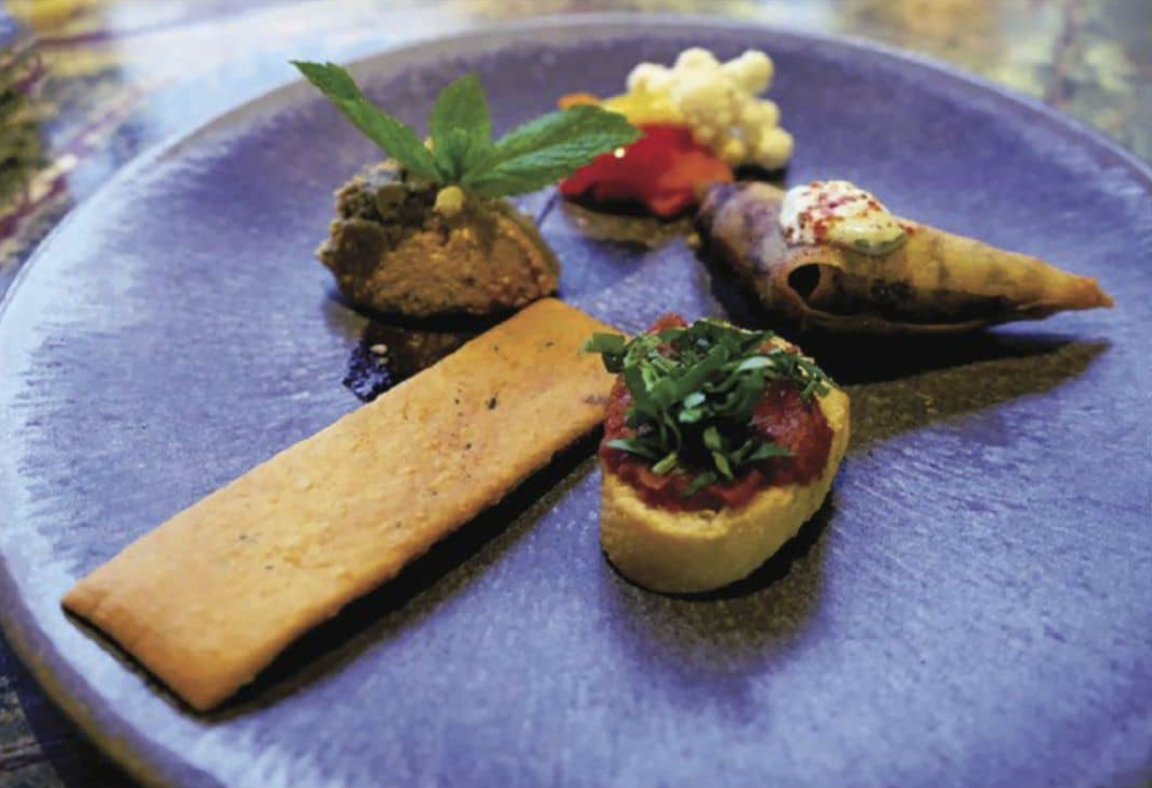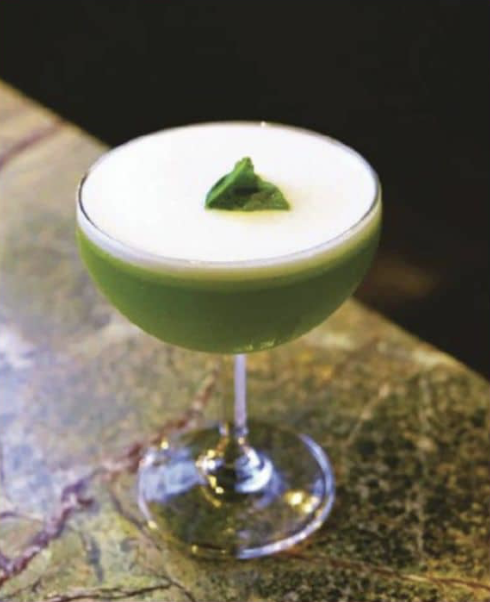Myanmar’s Finest: Burmese Cuisine at the Pansodan
Most pop-up restaurants have the lifespan of a mayfly. Culinary experiences can flit in and out of major cities from anywhere between a snappy weekend to a handful of months.
A collaboration between the JIA Group and Burmese entrepreneur Ivan Pun, The Pansodan pop-up originally debuted for a three-month period. Popular demand saw this deadline extended to the end of July, and then once again to late October. Praised by e-magazines and food bloggers alike, The Pansodan is an offshoot of a Yangon-based Burmese brasserie (another one of Ivan Pun’s culinary projects).
When we sit at our table on a Tuesday night, the restaurant is near capacity. Besides the draw of delicious food, the space is incredibly inviting. The restaurant is bathed in a soft warm glow, emitting from ceiling lights affixed with Asian-inspired fishing baskets. Hand-painted wallpapers feature jungle flora and fauna by local artist Laura Cheung of Lala Curio. Rattan panels, cane chairs, and red banquettes point to the brasserie concept that inspired Pun’s design choices.
Because variety is the spice of life, we ordered the tasting menu - a five-course medley of appetisers, salads, curry, noodles, biryani, steak, and dessert. While waiting, we sipped on '“The Pansodan” cocktails. Comprised of Absolute Vodka, lemongrass, lime, pineapple, and basil, the sweetness of the lemongrass and pineapple claimed the drink’s initial impression, tinged with the basil’s aromatic flavour and the lime’s signature acidity.
Placing stunning dishes down, our waitress cheerily explained the first course.
Burmese paté - chicken liver with black pepper crisps and pickles - had a silken texture accented with rich, deep notes. A savoury cracker was provided to complement the rich paté. Burmese tomato chutney rested neatly on homemade honey toast.
The sudden, sharp tang of the spicy paste was balanced by the creamy tomato texture. Salt was not immediately obvious, but its taste lingered after a bite.
The samosa, a tiny homage to Indian flavours, was made of masala-spiced sweet potato and green peas, topped with Indian yoghurt dip. The mild yoghurt was a brilliant addition, preventing rich flavours from turning overpowering.
Appetites whetted, we eagerly welcomed the salad course, which included laphet thoke (fermented salad), nan gyi thoke (thick rice noodle salad), and lotus root. The laphet thoke was crisp, its light vinegar coating sharpening deep earthy tones. Buttery-smooth noodles were uplifted with lime and chilli sauce in the nan gyi thoke, the spice permeating your tongue as you scooped up a bite of noodles, shredded chicken, and spiced tomato. Sautéd lotus roots were paired with grilled prawns and chilli lime dressing. The prawns - fluffy as clouds - left a sweet impression.
The general manager served our next dish, sweetly introducing himself as “Guac, without ‘amole’ “. Guac served us two dishes consisting of rakhine fish curry and crab biryani. The sharply distinct tones of sawtooth coriander, chillies, and lemongrass in poached sea bream rested in a shallow bowl of aromatic broth. As he explained the dishes, Guac helpfully noted that the crab shell resting atop the biryani was meant to be turned over. Once done, a stunning combination of crabmeat and crab butter was revealed. The flaky basmati rice, containing cashews and raisins, was a fine companion to the biryani masala and crab meat.
The penultimate portion was a showstopper. Melt-in-your-mouth tender sirloin steak was elevated with Burmese laphet and coriander relish. It was artfully decorated with coriander leaves as well as carrot and red bell pepper shavings, adding a pop of colour to the delicious dish. The relish had a commanding acidity that complemented the silky-smooth sirloin.
Dessert was a fresh take on the panna cotta. With neither sucrose nor syrup, the mango purée was created by simply placing mangoes in the freezer. Once frozen, the fruits were processed into purée, creating an all-natural sugary accent.
Jiggling as it was scooped up, what was left on the plate perfectly retained its structural integrity. The iciness of the purée and the fruit slices (mango, strawberry, and blueberry) moulded neatly around the panna cotta. At the first bite, I was immediately reminded of mango sticky rice.
Open all week except Mondays, The Pansodan has caught the attention of Hong Kong’s fine diners and broadened the city’s knowledge of mysterious Myanmar through the universal experience of food.
Originally published in CULTURE Magazine Issue 176 (August-September 2019)

